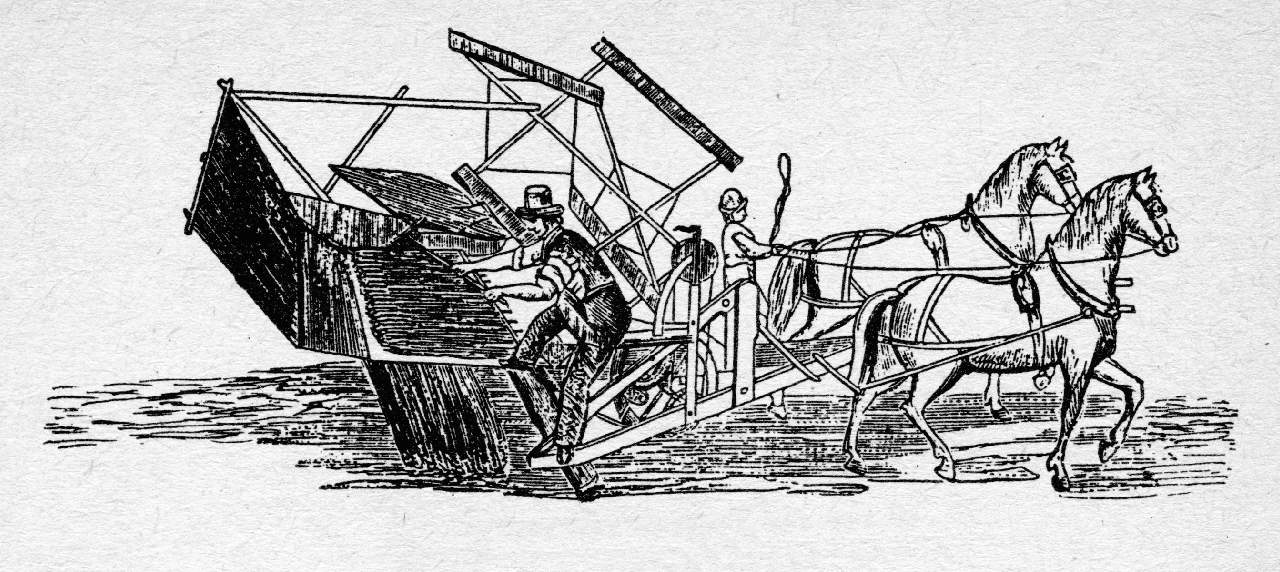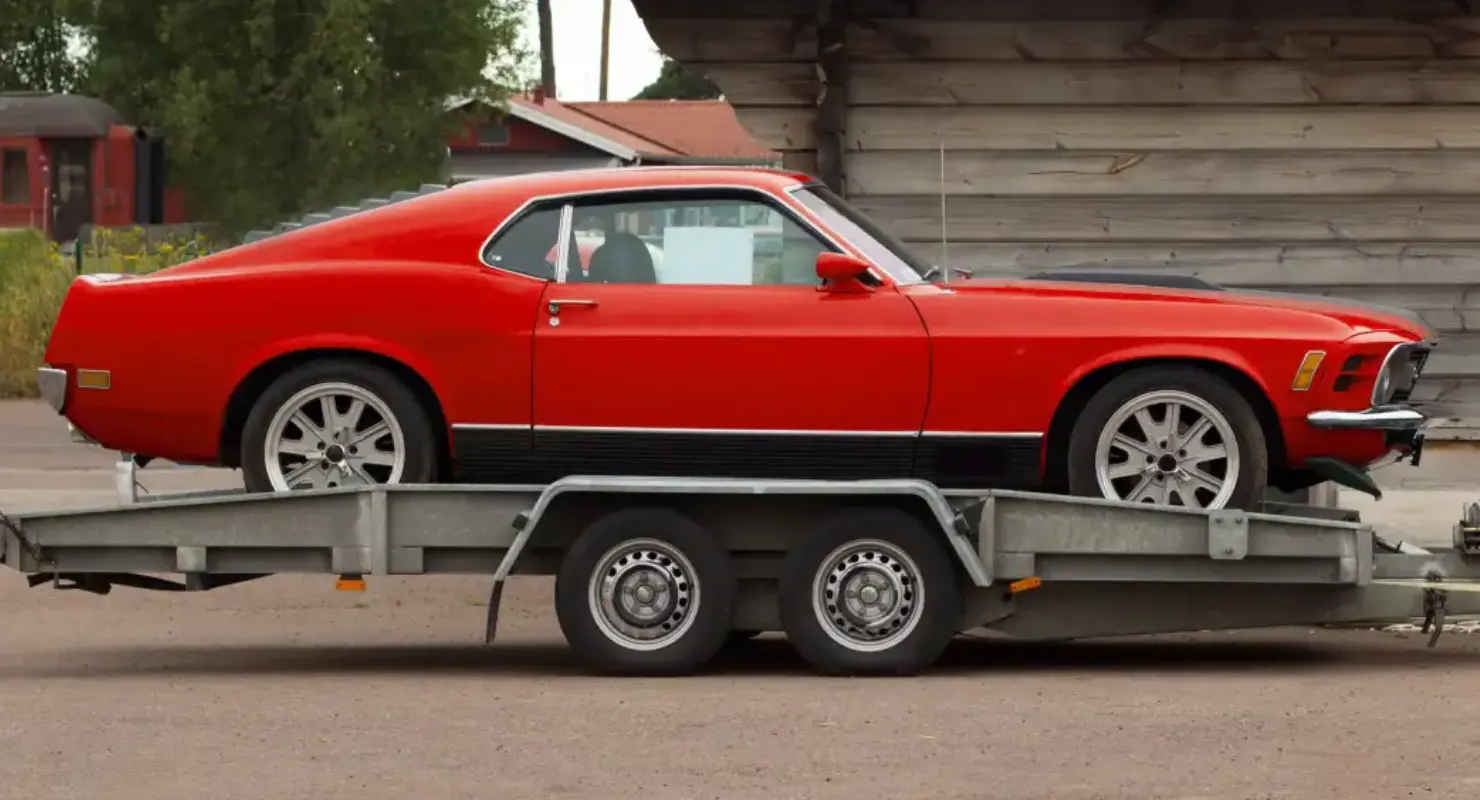
This article explains what a swather is, the reasons for having one, and which types are used in modern agriculture. It also explores notable manufacturers and provides the key things to consider when choosing a swather for your agricultural needs.
Atlantic Project Cargo can help you ship a windrower or other farm machinery. We offer reliable and cost-effective transportation services to ensure the safe and timely delivery of your equipment. Our team can help you navigate the process and find the most efficient solution for your needs.
What is a Swather?
It is an agricultural equipment that cuts hay or grain and lays it down in a row called a windrow or swath. This process allows the grain to dry before it is harvested.
The term “swather” is primarily used in North America, while in Australia and other regions, these machines are referred to as “windrowers.”
The History of a Swather

In 1831, Cyrus McCormick invented the mechanical reaper, a prototype of a swather. This innovative machine enabled a single worker to cut 16 hectares (40 acres) in a day — a task that would have required five men to accomplish by hand at that time.
The McCormick design was then refined by other agricultural companies, integrating engines and open cabs and allowing farmers to ride the machine as it cut and swathed the crops.
Modern swathers typically utilize a sickle bar or disks to cut the crop stems. A reel helps the cut crop fall onto a canvas or auger conveyor, which moves and deposits it into a windrow. At the same time, all the stems are oriented in the same direction.
Today’s swathers are equipped with advanced technology that enables farmers to map out their fields and utilize technologies, allowing the machine to navigate the field automatically.
While modern windrowers have seen enhancements such as closed cabs, engines, and digital systems, many original design elements persist. They still feature large headers with rakes to gather the crop and maintain the capability to lay it down in straight rows after cutting.
Why Should Farmers Use a Swather?
Here are the main reasons for using a windrower:
- Efficient Drying
It cuts and lays out grain crops in neat rows, which helps them dry faster by allowing sunlight and wind to reach them - Better Quality
By spreading the cut crops evenly, the risk of mold and spoilage is lowered, which improves the overall quality and reduces waste - Easier Haymaking
The windrower forms tidy rows of hay that are simple to gather and pack into bales for storage or sale - Saving Time and Resources
The swather allows farmers to cover large areas more quickly and efficiently than doing it by hand
Where is a Windrower Most Commonly Used?
The windrowing process is primarily used in the northern United States and Canada, where cutting plant stems helps reduce the curing time for grain during shorter growing seasons.
In areas with longer growing seasons, hay and cereal crops are often left standing and harvested with a combine. This is because grains in these regions can usually reach the right moisture level on their own without needing extra assistance.
Types of Swathers
There are two types of windrowers, each designed for specific applications.
Self-Propelled Windrower
Self-propelled swathers are machines equipped with an engine and drive system. They have a cutting header mounted on the front.
These windrowers are designed for easy maneuverability, making them suitable for irregularly shaped fields or areas with obstacles.
Towed or Pull-Type Windrower
Pull-type swathers are designed to be towed behind a tractor and use a power take-off (PTO) shaft to transmit energy to the swather attachment. They consist of a cutting header and a frame that connects to the tractor’s hitch.
These swathers are usually less expensive than self-propelled models, making them more accessible for smaller operations.
Types of Windrower Headers
Windrowers can be equipped with different cutting headers, primarily sickle bar or disc. Each has its advantages and suitable applications.
Sickle Bar Headers
Sickle bar headers consist of a series of sharp, reciprocating blades arranged in a bar configuration. As the bar moves back and forth, the blades cut through the crop.
They provide a clean cut, which is beneficial for certain types of crops. Generally, sickle bar headers are less expensive than disc headers, making them suitable for smaller operations.
These headers are often used for cutting grass, hay, and other forage crops.
Disc Headers
They use a series of rotating discs equipped with sharp blades that cut crops during rotation. The design allows for continuous cutting action.
They can handle a wider range of crop types, including thicker or more fibrous materials, making them suitable for various conditions. The design of disc headers tends to be less prone to clogging compared to sickle bar headers, especially in challenging crop conditions.
Disc headers are commonly used for hay, silage, and grain crops.
Windrower Manufacturers

Here are some of the most popular swather manufacturers, who provide a variety of options suited for different farming needs.
John Deere
This is one of the most recognized names in the agricultural equipment industry, known for its innovative technology and durable machinery. It has shown an ongoing commitment to helping customers be as productive as possible.
Their windrowers are designed for ease of use, featuring advanced cutting systems and comfortable operator environments. They feature the AutoTrac™ system, windrow adjusting technology based on weather conditions, and constant header speed for a consistent cut quality.
Model examples:
- W235R
- W260R
- W200M
- W260M
- W170
Case IH
The brand focuses on providing high-performance equipment that meets the diverse needs of farmers. Case IH is known for its robust engineering and dedication to innovation, making it a popular choice among farmers.
These windrowers help to transform the tough spots without losing harvest quality. They ensure maximum efficiency through operations and innovations such as FieldCruise and Triple Windrover Attachment. Their cutting speed reaches 20 mph.
Model examples:
- WD1505
- WD2105
- WD2505
- 8860HP
- WDX1202
New Holland
New Holland focuses on providing user-friendly machines. It offers a wide range of agricultural equipment and is recognized for its commitment to sustainability and innovation.
Their new swathers set the standard with best-in-class operator comfort, fuel efficiency, and advanced Tier-3 compliant engines. They provide excellent drivability thanks to the advanced Sensodrive™ wireless control.
Model examples:
- SR130
- SR200
- SR240
- H8040
- H8080
Claas
This German manufacturer is known for its high-quality agricultural machinery, especially harvesting. Claas emphasizes precision farming and technology integration, making it a preferred choice for many modern farmers.
Their windrowers’ robust design and affordable mechanical power train ensure minimal downtime and maximum performance. Innovative features such as a professional rotor drive housing with an oil bath and easily replaceable tine bars make these machines efficient and easy to maintain.
Model examples:
- 2600 Trend
- 4700 Trend
- 700 TWIN Trend
- 4800 Business
- 1600 TWIN Business
MacDon
This company has built a reputation for innovation and performance in the agricultural sector. It has a strong emphasis on customer support and product development, continually adapting to the evolving needs of the agricultural industry.
MacDon swathers are designed for maximum efficiency and flexibility, featuring advanced cutting systems that provide a clean and precise cut. Thanks to the patented Dual Direction® technology you can go from field speeds up to 29 km/h (18 mph) to road speeds up to 43.4 km/h (27 mph).
Model examples:
- M155
- M1170NT
- M155E4
- M2170
- M2260
How to Choose a Swather
When buying a new or used windrower, it is important to check several things to make sure you are getting good value for your money.
- Consider the swather’s size and appearance and make sure it has the features you need. If possible, arrange a test drive to see how well it moves forward and backward, and ensure the transmission works as expected
- If you are choosing a used windrower, walk around it to inspect the paint and look for any leaks or damage that might need fixing. The overall condition can give you clues about how well the previous owners took care of it, helping you decide if it is a smart purchase
- For both new and used swathers, check the engine specifications. If it is used, lift the hood while the engine is running to look for leaks in hoses, hydraulics, or other parts. Also, check the engine plate to confirm the specifications, ensuring it meets your needs and complies with emission standards
How to Transport a Swather
Most windrowers are considered Out-of-Gauge Cargo and are required to ship on a special trailer or container.
An RGN (Removable Goose Neck) trailer is typically used to transport a swather across the country. This trailer has a great load capacity and is ideal for oversized cargo transportation. Another advantage of the RGN trailer is that a self-propelled machine can be driven onto it once it is lowered to the ground.
Specialized container types used for outsized windrowers include open-top and flat racks. An open-top container has the same dimensions as a standard one but is not enclosed on top. Cargo is loaded overhead using a crane.
Flat racks have collapsible walls at the front and rear, without sides and top. When shipping in this container, a machine must be properly secured and may need to be shrink-wrapped for extra protection.
In addition, disassembly may be required to safely transport your swather. Its parts are disconnected and shipped as separate pieces into a single container or trailer. This method simplifies logistics and minimizes shipping costs.
Self-propelled or towable windrowers can also be transported on a RORO (Roll On/Roll Off) vessel. This is a method of transportation where a machine is driven directly onto a ship. RORO shipping is cost-effective because you pay only for the space your equipment occupies.
Conclusion
A windrower is necessary agricultural equipment that plays a key role in the harvesting process. It helps farmers manage their fields more effectively, ensuring optimal drying and preparation for the next stages of harvest.
Knowing what a windrower is, what types there are, and which manufacturers produce them helps you choose the equipment suitable for your needs.
If you have purchased your perfect windrower and need top-quality shipping services, Atlantic Project Cargo can help. We can assist with customs clearance, disassembly, insurance, and much more.
Read More


